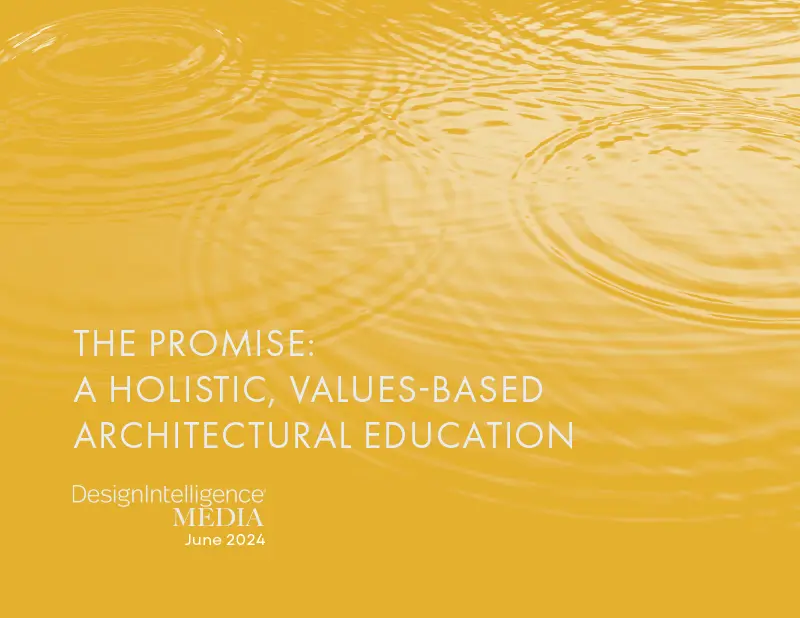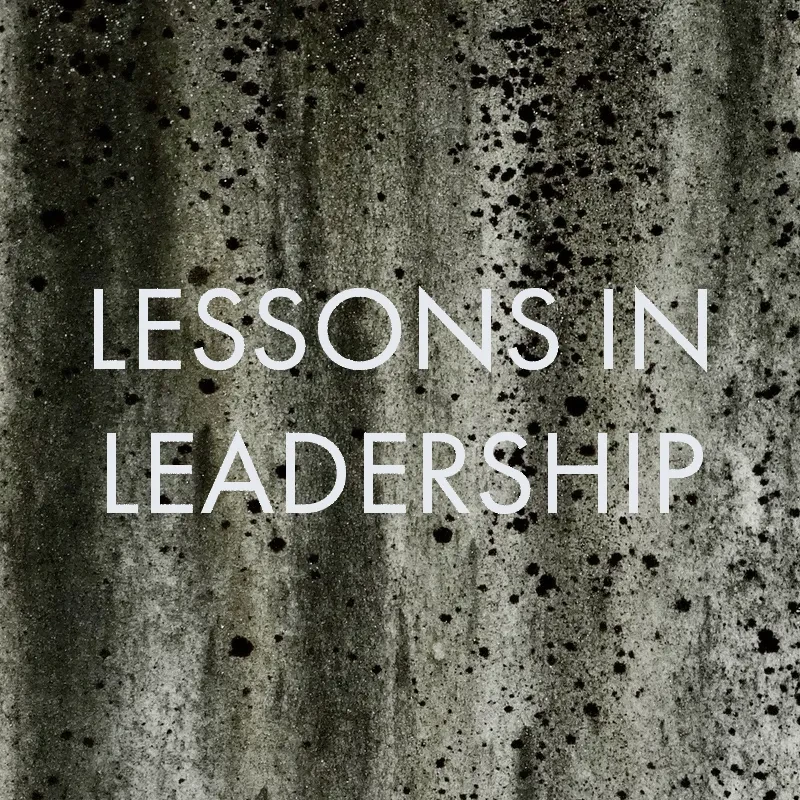
The Promise:
A Holistic, Values-Based Architectural Education
Michael J. Monti, PhD, Hon. AIA, NOMA
Executive Director of the Association of Collegiate Schools of Architecture (ACSA)
June 12, 2024
ACSA head Michael Monti lays the foundation for multidimensional architectural education — and accountability.
Abstract: Monti argues the architecture profession stands to benefit from an educational model that emphasizes the foundational values and ethics of the profession, rather than simply technical expertise. With sweeping change enabled by technology and with growing imperatives for the AEC industry to be more accountable, professional education in architecture needs to prepare four-dimensional graduates: technically sound, capable communicators, systems thinkers and ethical, accountable professionals.
Leadership and relevance are at stake for the architecture profession now more than ever. From sustainably designed, sourced and operated buildings to healthy and equitable cities, the profession’s firms have the opportunity, if not the obligation, to be more than service providers for clients. To assert ourselves, however, I see the need for a consistent thread to be pulled through from education into the profession’s firms. This thread foregrounds the ethical foundations of the profession as opposed to the technical aptitudes of building design. These foundations should be considered core to what sustains architecture as a licensed profession and as a basis for growing architecture’s value. At the conclusion of this essay, I stake the claim that although technical expertise remains a requirement, it is but one of four dimensions of architecture graduates that will best serve the profession’s demand for future leadership and relevance.
What qualifies architecture as a licensed profession is more than the conventional definition, one grounded in protecting the public from fraudulent practice and dangerous buildings. What creates value for architecture as a profession is more than the technical outcomes of building design. Michael Bayles in his book “Professional Ethics”1 offers some general characteristics of professions:
- Professionals provide services that are well defined and differentiated.
- The profession requires a level of expertise that others cannot easily acquire.
- People need these professional services for a civilized life.
- Clients who access these services are vulnerable to mistreatment due to fraud, negligence or other malfeasance.
Professions are accorded various levels of respect and prestige and, importantly, are given autonomy in how they organize and regulate themselves through education and licensure. Protecting the health, safety and welfare of the public is typically the first reason given for why architects are licensed. Licensing also serves other purposes beyond protecting the public. Licensing appropriates a legally defined realm of work to a group of people and excludes other nonprofessionals or paraprofessionals from access to that domain of work.
Although technical expertise remains a requirement, it is but one of four dimensions of architecture graduates that will best serve the profession’s demand for future leadership and relevance.
In recent years we have seen movements in various states to deregulate certain fields on the grounds that such regulation unnecessarily hinders commerce or access to a market for services. If architecture is defined in terms of the technical services needed to deliver buildings, then we might fall prey to the argument that architectural services are not sufficiently differentiated to justify licensure. As technology has rapidly developed in architectural design, the knowledge and skills that previously belonged to architects — largely in an analog world — are no longer our differentiators. From CAD to BIM to many other digital tools that turbocharge the design process, software has helped broaden the kinds of knowledge and expertise that a host of disciplines and professions can bring to support a building project.2 Not to mention the advent of AI in the profession.
In current practice, shared or complementary skills are valuable for clients and firms who bring people from different disciplines together to complete projects. But the question remains: In today’s practice environment, what kinds of knowledge and expertise differentiate architects from other licensed or otherwise regulated professions in the built environment? The answers are essential to expanding the relevance and leadership position of the architecture profession.
The third of Bayles’ four points suggests that we think broadly about what might be entailed in the concept of a civilized life. This is essential to what architects strive to bring into being. It is also what differentiates architecture from mere buildings.
Inherent in a civilized life are shared concepts such as dignity, freedom, health and well-being, beauty and equity, among others. These concepts reflect the nature of social relationships made possible by the ability of individuals to think of themselves in these terms — i.e., as healthy, free, valued by society, etc. — or by the ability of individuals to strive for these kinds of situations in their own lives and in the lives of the people they consider family, friends and fellow community members. Architects have roles in making these values possible, and this is precisely what the broader public needs to understand.
In today’s practice environment, what kinds of knowledge and expertise differentiate architects from other licensed or otherwise regulated professions in the built environment?
Architecture is far from being a mercenary field whose practitioners see their roles simply as carrying out the contractual demands of a client and only those demands. Rather, architects have long seen and still should see themselves as having an obligation to bring forth these kinds of shared values into civic life as a result of what they know and do — a form of exchange for the status and autonomy associated with being recognized as a licensed professional.
I am not implying that most in the architecture field do not aspire to these higher outcomes. I believe they do. I am instead arguing that these outcomes and the obligations that generate them should be front and center in how anyone who considers themselves part of the profession views our field and its possibilities. The key word in this assessment is accountability. If architects are not merely service providers doing the bidding of their paying clients, then it is because architects answer to higher obligations and are willing to be accountable for them by understanding their past, their present and what the possibilities can be for the future.
I underscore that these obligations exist in our present, in our future and in our past. Understanding the profession’s history is also essential to understanding its present. What role, direct or indirect, does the architecture profession have in our society’s greatest policy and practice failures, from unjust gentrification to disparities in access to health care, education, housing and other public goods that are affected by the design of built environments? Architecture as a profession must be accountable to its past so it can critically assess its future.
In essence, I am arguing that a renewed understanding of the value of the profession and the obligations that come with this expanded value is premised on a revaluation of architectural education. This begins to expand a sense of what architectural education could be in an age when software has enabled so many more fields to contribute to building design and construction. To offer one such approach, I suggest an expanded, four-dimensional model for architecture graduates.
Professional education in architecture demands and must serve students who are:
- Technically sound.
- Capable communicators.
- Systems thinkers.
- Ethical and accountable.
Expanding on each of these attributes is beyond the scope of this discussion. Nonetheless, I still believe graduates must understand how a building goes together. They also need to understand the processes and standards by which buildings are designed, through all phases of the design process.
But architects are not the only ones responsible for how buildings and their systems are synthesized, yet they are one of the few contributors also responsible for understanding and being accountable for the building or project’s big picture. This resides in the client’s building program and aspirations, as well as in the impact of the project on a variety of stakeholders, from the building’s immediate neighbors to its relationship to the city, to its relationship to the natural and man-made systems that will supply its water or produce its timber, steel or concrete.
To uphold this responsibility, architecture graduates must be multiskilled communicators, capable of demonstrating these aspects through drawing, writing and speaking. They must be able to understand how social, economic, environmental and other systems come together in an architectural project.
And finally, they must have the knowledge and the grounding to be accountable for these implications.
Footnotes:
1 Michael D. Bayles, Professional Ethics (Belmont, CA: Wadsworth, 1989), 8–14.
2 A similar point about the potential for architects work to be usurped by other fields is made by Anastasia Cortes, “On
the Value(s) of an Architect,” in Proceedings of the 106th ACSA Annual Meeting (2018), available at https://www.acsa-arch.org/proceedings-index/.
Michael Monti is executive director of the Association of Collegiate Schools of Architecture, the membership organization for architecture schools in the United States and Canada.




